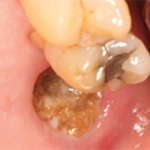NEW YORK (Reuters Health)—The investigational drug romosozumab led to gains in hip bone mineral density (BMD) that were not seen with teriparatide in older women with osteoporosis transitioning from bisphosphonate therapy in the STRUCTURE study.
Amgen’s romosozumab is a monoclonal antibody that inhibits sclerosin, a negative regulator of bone formation. In addition to stimulating bone formation, it also inhibits bone resorption.
Results of the Phase 3 STRUCTURE study suggest that romosozumab “[may] be an effective treatment option for patients at increased risk for fracture who are transitioning from oral bisphosphonate therapy,” write Dr. Bente Langdahl, from Aarhus University Hospital in Denmark, and colleagues in The Lancet, online July 26.1
The study was funded by Amgen, Astellas and UCB Pharma.
The study enrolled 436 women with postmenopausal osteoporosis who had taken an oral bisphosphonate for at least three years prior to screening and alendronate in the year before screening. The women had areal BMD T-scores of -2.5 or lower at the total hip, lumbar spine, or femoral neck and a history of vertebral or nonvertebral fracture. They received daily calcium and vitamin D and were randomly assigned to subcutaneous romosozumab (210 mg monthly) or subcutaneous teriparatide (20 mcg daily).
Through 12 months, the mean percent change from baseline in total hip areal BMD was +2.6% in the romosozumab arm vs. -0.6% in the teriparatide arm, a significant difference (P<0.0001).
At six and 12 months, the mean percent changes from baseline in areal BMD at the femoral neck and lumbar spine were also significantly greater with romosozumab than with teriparatide.
Significant gains in integral and cortical volumetric BMD and estimated hip strength were seen with romosozumab at 12 months, whereas integral BMD at the hip and estimated hip strength declined with teriparatide. “These results suggest that romosozumab might offer a unique benefit to patients with postmenopausal osteoporosis who are transitioning from bisphosphonate therapy,” write Dr. Langdahl and colleagues.
Overall, romosozumab was well tolerated with no new safety concerns, they say. The most frequently reported adverse events were nasopharyngitis (13% of patients in the romosozumab arm and 10% of patients in the teriparatide group), hypercalcemia (<1% vs. 10%), and arthralgia (10% vs. 6%). Three patients on romosozumab developed hypocalcemia, compared with none on teriparatide.
Serious adverse events were reported in 8% patients on romosozumab and in 11% on teriparatide; none were judged to be treatment-related.
In an invited comment in The Lancet, Dr. Juliet Compston of the Cambridge Biomedical Campus, in Cambridge, U.K., notes that in clinical practice, “it is not uncommon to encounter patients who despite adequate adherence to medication apparently do not respond to oral bisphosphonates, with persistently low BMD or incident fracture during treatment. Some of these patients might respond to intravenous bisphosphonate therapy, but in others switching to a drug that stimulates bone formation is a reasonable approach.”2
She adds, “Although the effects on fracture risk have not been established, the results of the study by Langdahl and colleagues suggest that the greatest benefits for hip BMD and estimated strength are obtained with a drug such as romosozumab that stimulates bone formation and inhibits bone resorption.”
“Use of sequential therapy in osteoporosis is the focus of much attention, and this study shows the potential for the use of drugs with different mechanisms of action as a strategy to improve outcomes in the management of osteoporosis. Since the duration of therapy with bone-forming agents is limited and bone loss follows treatment withdrawal, the subsequent use of interventions to maintain treatment benefits is an important area for future research,” Dr. Compston concludes.
Dr. Langdahl and several coauthors have disclosed financial relationships with Amgen, UCB Pharma, and other pharmaceutical companies. Dr. Compston has received speaking fees from Amgen for a talk on the treatment gap in osteoporosis.
References
- Langdahl BL, Libanati C, Crittenden DB, et al. Romosozumab (sclerostin monoclonal antibody) versus teriparatide in postmenopausal women with osteoporosis transitioning from oral bisphosphonate therapy: A randomised, open-label, phase 3 trial. Lancet. 2017 Jul 26. pii: S0140-6736(17)31613-6. doi: 10.1016/S0140-6736(17)31613-6. [Epub ahead of print]
- Compston J. Bone-forming agents in non-responders to bisphosphonates. Lancet. 2017 Jul 26. pii: S0140-6736(17)31824-X. doi: 10.1016/S0140-6736(17)31824-X. [Epub ahead of print]

